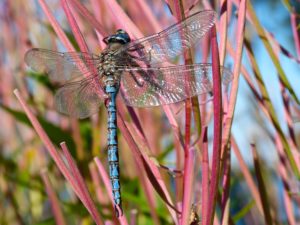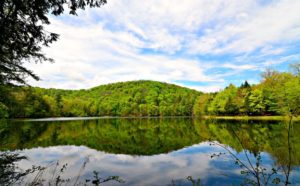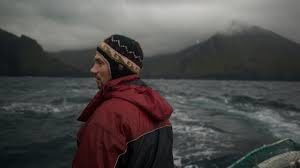“Mercury Rising?”

That’s the title of a Spring 2017 National Parks magazine article by associate editor Nicolas Brulliard about the increase in mercury in the air we breathe and the food we eat.
 Accompanying the text is this picture showing an adult dragonfly at Lake Clark National Park and Preserve in AL. At once beautiful and a marvel of aeronautics. )This insect has been a personal fascination ever since I was a kid.)
Accompanying the text is this picture showing an adult dragonfly at Lake Clark National Park and Preserve in AL. At once beautiful and a marvel of aeronautics. )This insect has been a personal fascination ever since I was a kid.)
Looking again at coal and its deleterious effects on the biosphere, here’s a basics refresher.
“Mercury is a metal that occurs naturally in rocks, including coal. Emissions from coal-fired power plants and the burning of other fossil fuels and certain waste are the primary sources of mercury pollution, but it is also released into the atmosphere through natural events such as volcanic eruptions and forest fires.”
“Wearing waders, the students [from a school near Marsh-Billing-Rockefeller National Historic Park in VT] enter the boggy waters and use their dip nets to scoop up peat-like muck from the pond floor. They’re looking for brown, alien-like larvae that can grow up to one-and-a-half inches long and eventually turn into one of the pond’s most scintillating residents: dragonflies.

“Before they morph into their adult form, these larvae can spend years underwater. During that time, they gobble up smaller insects and accumulate mercury, a toxic metal that can have a devastating impact on wildlife.”
These samples are then sent by the students to scientists for mercury testing. The results? Anything but encouraging.
“The [mercury] pollutant can remain in the atmosphere for years and travel thousands of miles before falling to the ground in the form of raindrops or dust, so even isolated wilderness areas can be effected.
“Bacteria then combine carbon with mercury to create methylmercury, a compound that is ingested by creatures large and small. Because fish and other wildlife eliminate mercury very slowly, their contamination levels increase over time as they continue to feast on mercury-rich prey.”
There have been numerous studies of mercury’s effect on fish populations, but scientists offer that dragonfly larvae are even better candidates for sampling because they can also be found in waters where no fish live. The larvae are “relatively similar to each other, physiologically speaking. ‘It makes for an easier apples-to-apples comparison,’ states a scientist quoted in the article’.”
Humans can be harmed. Neurological disorders have been seen in a study of Minamata, Japan, residents who’ve been exposed to mercury pollution (poisoning) for decades.
“Almost everyone has trace amounts of methyulmercury, but the [EPA] estimates that each year more than 75,000 newborns in the U.S.A. are at increased risk of developing learning disabilities because of their exposure to the pollutant while in the womb.”
Mercury’s effects on the Adirondack Park in New York State as well as other national forests is well documented. Fish populations have been lost in the lakes there. Loons, other aquatic birds and bats have been and are being poisoned. So too are the evergreens.
A civil war continues, in a certain respect, at Gettysburg. Acid rain has been wreaking havoc on the monuments there for years. (The President’s donation of salary to the NPS will be used specifically for monument restoration/maintenance.)

 “The Islands and the Wales,” a 2016 documentary just screened at the Annapolis Film Festival, calls attention to the effects of mercury poisoning in the North Atlantic archipelago of the Faroe Islands.
“The Islands and the Wales,” a 2016 documentary just screened at the Annapolis Film Festival, calls attention to the effects of mercury poisoning in the North Atlantic archipelago of the Faroe Islands.
At this link is the website for the movie which includes a trailer.
When next thinking about buying fluorescent bulbs, including CFLs, and disposable batteries, think again about alternatives that don’t contain mercury or are longer-lived as with re-chargeable batteries. Yes, they can be recycled by those of us who are so committed, but what about everyone else who doesn’t know or, worse, don’t care?